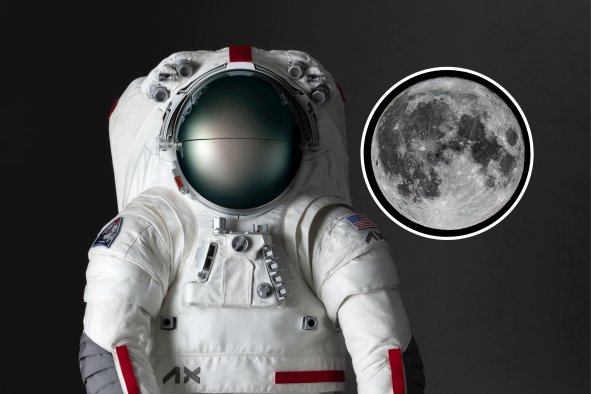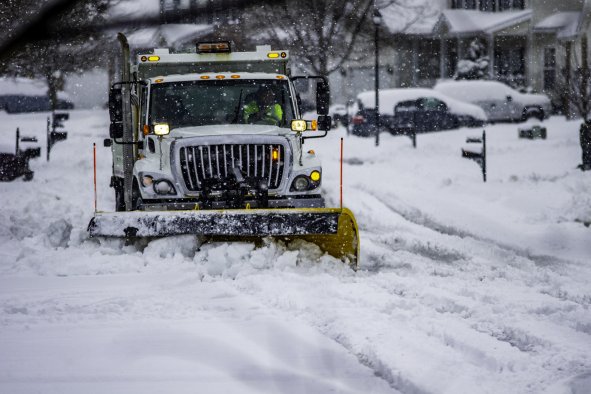As the sun sets tonight, stargazers across the globe are in for a treat as the year's largest supermoon, known as the Hunter's Moon, graces the night sky.
This event marks the pinnacle of a series of four consecutive supermoons, promising to be the most impressive display of lunar majesty in 2024.
No special equipment is needed to enjoy the show, and you can even see it from major cities. But if you do miss this one, don't fret. The next supermoon in the series will be here on Nov. 15.
When Is the Full Moon in October?
The next full supermoon will occur on Thursday, October 17. The moon reached its fullest point this morning at 7:26 a.m. ET. However, for obvious reasons—it being daylight and all—it wasn't visible.
Viewing Times and Locations
Eastern Time Zone
- Moonrise: 6:13 p.m. ET
- Moonset: 8:37 a.m. ET (Oct. 18)
Pacific Time Zone
- Moonrise: 6:25 p.m. PT
- Moonset: 8:29 a.m. PT (Oct. 18)
Where Can I See the Supermoon?
In theory, you should be able to see October's supermoon from across the country. In practice, however, you need the weather to play ball.
According to the latest forecasts from the National Weather Service, much of the Midwest, Southeast and Northeast should have pretty clear skies tonight, making for optimal viewing conditions.
The situation in the West is a little more complex. While California can expect little cloud cover, states like Wyoming, Utah and Montana might not see much sky at all.
Below is a full map from the NWS showing the percentage of sky cover forecast for tonight.
Tips for the Best Supermoon Experience
- Timing is key: The supermoon appears most impressive during moonrise or moonset when it's near the horizon.
- Escape light pollution: For an enhanced view, consider venturing outside city limits to avoid interference from artificial lighting.
- No special equipment needed: The supermoon is visible to the naked eye, though binoculars or a telescope can offer a more detailed look.
- Frame the view: When the moon is low on the horizon and framed by landmarks, an optical illusion makes it appear even larger.
Why Is It a 'Supermoon'?
A supermoon occurs when a full moon coincides with the moon's closest approach to Earth in its elliptical orbit, known as perigee. During tonight's event, the moon will be a mere 220,055 miles from Earth—its closest full moon approach of 2024.
Compared to an average full moon, a supermoon can appear up to:
- 30 percent brighter
- 14 percent larger
While the term "supermoon" is not scientific, it has captured public imagination. Scientists prefer the term "perigee syzygy" to describe this alignment of the Earth-Moon-Sun system.
When Is the Next Supermoon?
If you miss tonight's spectacle, mark your calendar for Nov. 15, 2024, when the final supermoon of this year's series will occur. Each supermoon offers a unique opportunity to appreciate the beauty and dynamics of our celestial neighbor.
Hunter's Moon Vs Harvest Moon
The Hunter's Moon and the Harvest Moon are both full moons, but they occur in different months and have distinct associations rooted in traditional farming and hunting practices.
The Harvest Moon is the full moon closest to the autumnal equinox, which usually falls around September 22 or 23 in the Northern Hemisphere. This means the Harvest Moon typically occurs in late September or early October.
The name comes from its usefulness to farmers. In the days before electricity, the Harvest Moon provided extra light in the evening, allowing farmers to work longer hours to gather crops during the critical harvest season.
The Hunter's Moon is the first full moon after the Harvest Moon, which typically places it in October. Like the Harvest Moon, the Hunter's Moon rises shortly after sunset, providing additional moonlight for several days in a row.
This year, both the Harvest Moon and Hunter's Moon were supermoons, but that isn't always the case.
Why Is it Called the Hunter's Moon?
The Hunter's Moon has been known by various names over the years, including the Corn Ripe Moon and the Falling Leaves Moon, according to the Old Farmer's Almanac.
The name "Hunter's Moon" originates from the Algonquin Native American tribe. In many cultures, this full moon signals the approach of winter and serves as a reminder to hunt and stock up on meat for the colder months ahead.
How Often Does a Supermoon Occur?
Supermoons happen more frequently than you might think. According to NASA, we typically see three or four supermoons each year.
You may feel that supermoons aren't as rare as they sound, given the recent streak of them lighting up the sky. But that's normal—supermoons often appear consecutively. This occurs due to the moon's elliptical orbit around Earth, which stays relatively fixed as both the Earth and moon orbit the sun.
However, because the sun's gravity slightly shifts the moon's orbit, its perigee—the point when it's closest to Earth—gradually moves.
This shifting alignment creates a cycle, taking about 411 days for the moon's perigee to return to the same position relative to the sun. As a result, every 14 lunar months, we get a series of larger and smaller full moons.
A supermoon happens when a full moon coincides with the moon's perigee, which is why they can occur multiple times in a row.
For example, during this latest supermoon, the moon will be just 220,055 miles from Earth—the closest a full moon will get this year. That means it will appear especially large and bright, making it the most "super" of the year.
Darren Baskill, a physics and astronomy lecturer at the University of Sussex, previously explained to Newsweek: "The term 'supermoon' is a vague, non-scientific term, and so different people define it in different ways.
"One common definition is to say that we have a supermoon when the moon is within 90 percent of its average distance away from the Earth—but which average distance? Some say within 90 percent of the average Earth-moon separation for that particular month, while others say within 90 percent of the average Earth-moon separation for that entire year.
"There is no overall consensus. Depending on which of those definitions you use, you can have three or four supermoons per year."
Do you have a tip on a science story that Newsweek should be covering? Do you have a question about supermoons or comets? Let us know via science@newsweek.com.
Disclaimer: The copyright of this article belongs to the original author. Reposting this article is solely for the purpose of information dissemination and does not constitute any investment advice. If there is any infringement, please contact us immediately. We will make corrections or deletions as necessary. Thank you.



